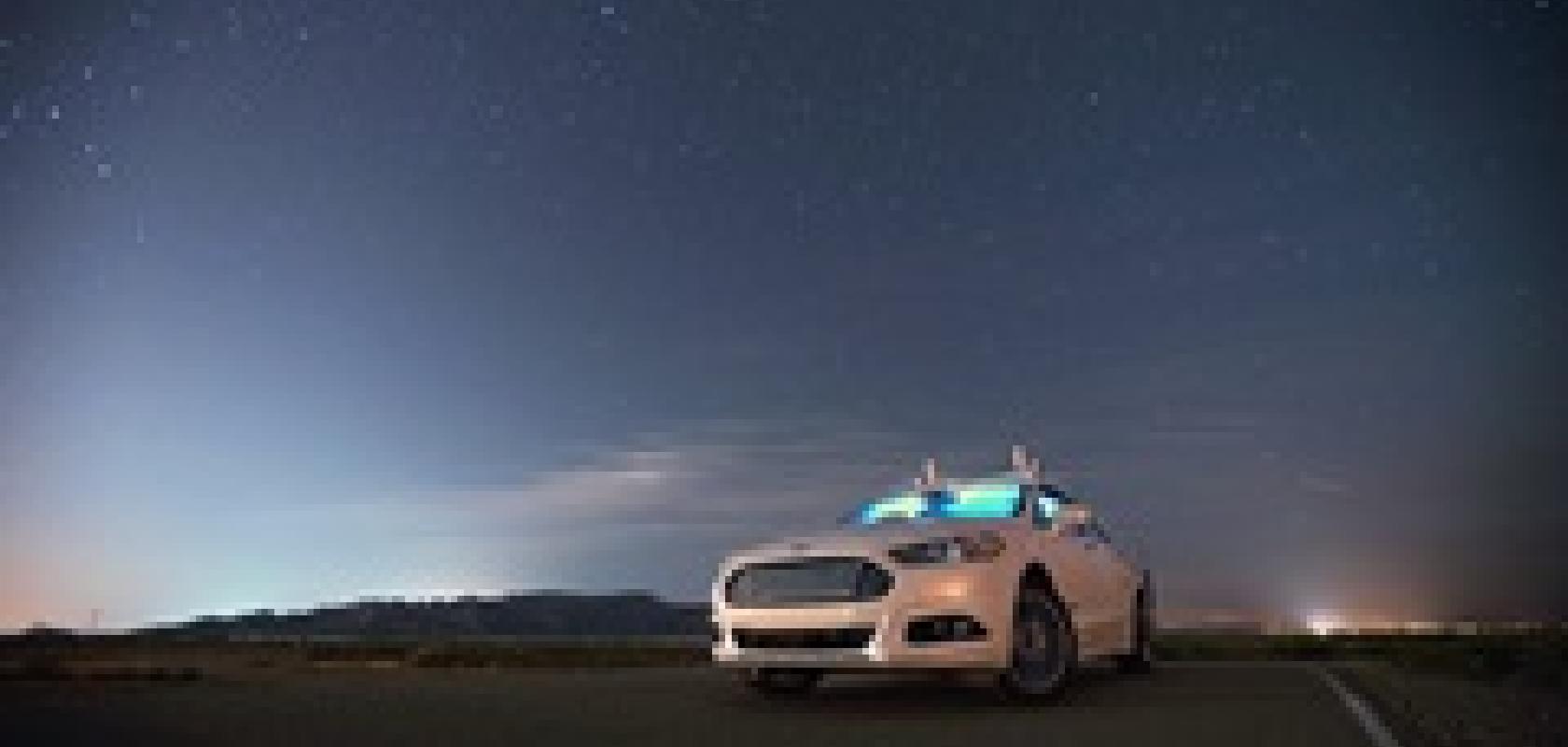Lidar has helped a Ford autonomous car to navigate in the dark. The lidar-equipped research vehicle was tested in a desert in Arizona, USA, with no headlights and in complete darkness.
Ford’s test in pitch black marks the next step on the company’s journey to delivering fully autonomous vehicles. It demonstrates that even without cameras, which rely on light, the lidar – working with the car’s virtual driver software – is capable of navigating on winding roads. While it’s ideal to have all three modes of sensors – radar, cameras and lidar – the test has shown that the latter can function independently on roads without stoplights.
National Highway Traffic Safety Administration data has found the passenger vehicle occupant fatality rate during dark hours to be about three times higher than the daytime rate.
‘Thanks to lidar, the test cars aren’t reliant on the sun shining, nor cameras detecting painted white lines on the asphalt,’ said Jim McBride, Ford technical leader for autonomous vehicles. ‘In fact, lidar allows autonomous cars to drive just as well in the dark as they do in the light of day.’
To navigate in the dark, Ford’s self-driving cars use high-resolution 3D maps – complete with information about the road, road markings, geography, topography and landmarks like signs, buildings and trees. The vehicle uses lidar pulses to pinpoint itself on the map in real time. Additional data from radar gets fused with that of lidar to complete the full sensing capability of the autonomous vehicle.
For the desert test, Ford engineers, wearing night-vision goggles, monitored the Fusion from inside and outside the vehicle. Night vision allowed them to see the autonomous car driving using a grid of infrared laser beams projected around the vehicle as it drove past. Lidar sensors shoot out 2.8 million laser pulses a second to scan the surrounding environment accurately.
‘Inside the car, I could feel it moving, but when I looked out the window, I only saw darkness,’ describesd Wayne Williams, a Ford research scientist and engineer. ‘As I rode in the back seat, I was following the car’s progression in real time using computer monitoring. Sure enough, it stayed precisely on track along those winding roads.’
Ford has spent more than a decade on autonomous vehicle research, in a bid to achieve fully autonomous driving capability. Ford announced at the SAE World Congress, which took place 12-14 April, that it will be the first customer to buy the new Velodyne ‘Ultra Puck’ lidar sensors. These sensors have a 360° surround view and a range of up to 200m.
Later this year, the company will triple its autonomous vehicle test fleet – bringing the number to about 30 self-driving Fusion Hybrid sedans for testing on roads in California, Arizona and Michigan.
Ford has recently joined forces with Google, Lyft, Uber and Volvo, form the ‘Self-Driving Coalition for Safer Streets’ coalition to speed up the time to market for self-driving cars. The coalition will ‘work with lawmakers, regulators and the public to realise the safety and societal benefits of self-driving vehicles,’ it was reported in Reuters.
The main task of this consortium will be to ‘work with civic organisations, municipalities and businesses to bring the vision of self-driving vehicles to America’s roads and highways.’ The condition of roads and highways are creating challenges for autonomous car developers, as they are forced to develop better sensors and software to adapt to varying surfaces and road damage.


